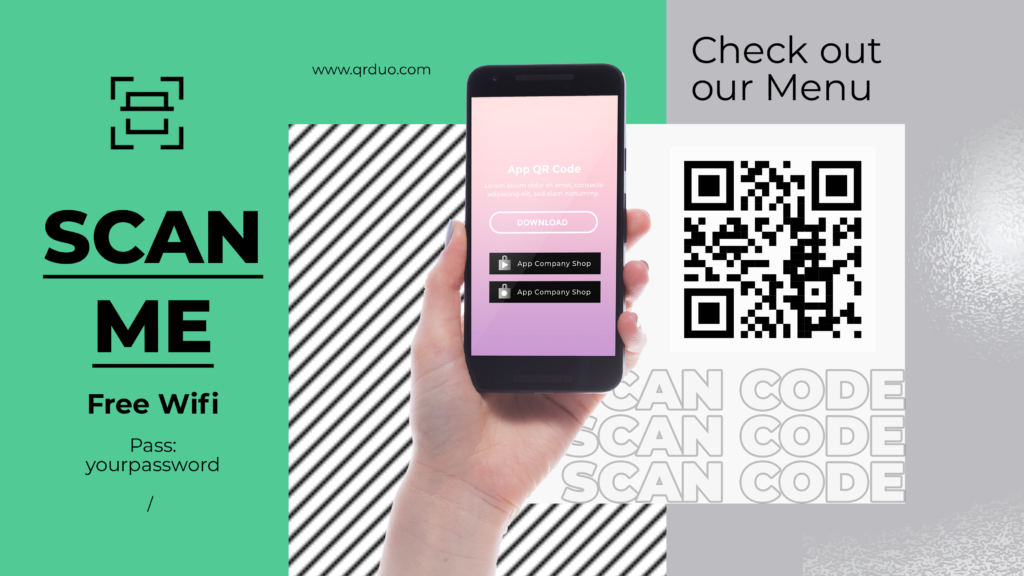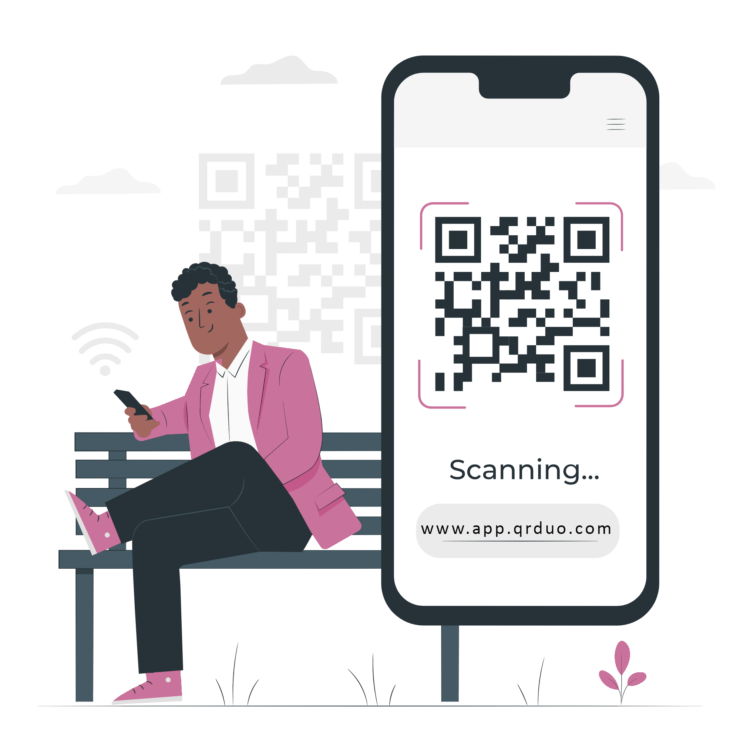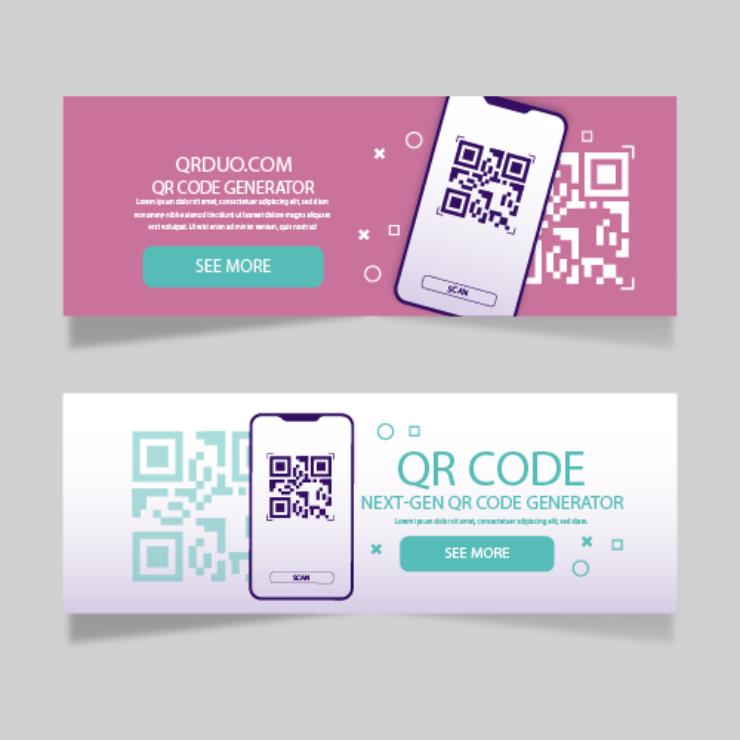In this article, we will be focusing on the effective usage of QR codes as a part of our ongoing series, the Ultimate Guide to QR Code Marketing. Having already covered the basics of what QR codes are, the various types of QR codes and their significance in digital marketing. We now delve into the strategies that can be employed to use qr code effectively – or what I call QR Code Best Practices.
QR codes have become increasingly popular over the years and are now a common tool for businesses to connect with their customers. Here are some of the best practices for using QR codes effectively in your marketing campaigns.
QR Code Best Practices 1: Define your objectives
Before you start using QR codes, it’s important to define your marketing objectives. Ask yourself, “What do I want to achieve by using QR codes?” Different types of QR codes serve different purposes, and the one you choose will depend on your marketing goals.
For instance, if you want to drive traffic to your website, you can create a QR code that leads to a landing page on your website. If you want to generate leads, you can create a QR code that directs users to a form where they can provide their contact information. If you want to increase sales, you can create a QR code that leads to a special offer or discount page.
Once you have a clear understanding of your objectives, you can design your QR codes accordingly. For example, you can customize the color and design of your QR code to make it more visually appealing and on-brand. You can also add a call-to-action to encourage users to scan the code and provide clear instructions on what they can expect once they scan it. By identifying your marketing objectives and designing your QR codes accordingly, you can use them effectively to achieve your desired outcomes.
QR Code Best Practices 2: Provide value to your customers
It’s important to understand that customers are not likely to scan a QR code unless there is something in it for them. This is why it’s crucial to offer something of value to your customers in exchange for scanning your QR code. This could be anything from discounts and special offers to free content like eBooks or whitepapers.
One of my favorite in the QR Code Best Practices is that, make sure to provide additional value to your customers through your QR code, you can incentivize them to take action and engage with your brand. This not only helps build brand loyalty, but it also provides a positive user experience for your customers. One way to make your QR code more enticing is by promoting the benefits of scanning it. You can include a call-to-action that explains what the customer can expect by scanning the code, such as “Scan to receive a 20% discount on your next purchase!” or “Scan to access exclusive content.”
It’s also important to ensure that the landing page or content that the QR code leads to is relevant and valuable to your customers. This will help keep them engaged and encourage them to take further action, such as making a purchase or signing up for your newsletter.
Overall, QR codes can be a powerful tool for providing additional value to your customers and building brand loyalty. By offering discounts, special offers, and free content, and promoting the benefits of scanning the code, you can encourage your customers to take action and engage with your brand in a meaningful way.
QR Code Best Practices 3: Make sure your QR codes are scannable
One of the most important aspects of using QR codes is to make sure that they are scannable. In other words, the QR code should be designed in such a way that it can be read by a scanner without any difficulty.
However, sometimes people get too creative with their QR code designs and end up making it difficult to scan. For example, they may use a complex background or add a lot of text or images around the QR code. These elements can make it difficult for the scanner to read the code.
To ensure that your QR code is scannable, you should make sure that it is large enough and has high contrast. A good rule of thumb is that the QR code should be at least 2 cm x 2 cm in size, but this can vary depending on the application. The contrast between the QR code and its background should also be high, so that it stands out and can be easily identified by the scanner.
Finally, the QR code should be placed in an area with good lighting. Poor lighting can cause the scanner to struggle to read the code, so it’s important to make sure that there is enough light to illuminate the code clearly.
If you want to use QR codes effectively, you need to make sure that they are scannable. This means that they should be designed with simplicity and readability in mind, and placed in an area with good lighting. By doing this, you can ensure that your QR code will be easy to scan, and will be a useful tool as intended to be.
QR Code Best Practices 4: Incorporate QR codes into your marketing materials
QR codes can be incorporated into various marketing materials such as flyers, brochures, posters, and business cards. By including QR codes in your marketing materials, you can easily connect with your customers and provide them with additional information.
QR Code Best Practices 5: Offer mobile-optimized content
When designing your QR code campaigns, it is essential to ensure that the content you offer is mobile-optimized. Mobile devices are the primary devices used to scan QR codes, so it is critical to ensure that your content is easily accessible and viewable on mobile devices.
QR Code Best Practices 6: Use QR Code Generator that has built-in tracking tools
To measure the performance of QR codes, it’s important to use a QR code generator that includes built-in tracking tools. These tools enable you to monitor the number of scans, the location of scans, and other important metrics that can help you assess the success of your campaign.
For example, you might want to know how many people are scanning your QR code, where they are located geographically, and which mobile devices they are using. This information can help you make data-driven decisions about your marketing campaign and improve its effectiveness.
Using a QR code generator with built-in tracking tools is an essential component of any QR code campaign. By monitoring and measuring the performance of your QR codes, you can gain valuable insights that can help you optimize your marketing efforts and achieve better results.
QR Code Best Practices 7: Use QR codes in a creative way
QR codes offer a unique opportunity to engage customers in a creative and interactive way. For example, you can use QR codes to create scavenger hunts, treasure hunts, or mystery games. This can be a fun and engaging way to promote your brand and get customers excited about your products or services.
To create engaging QR codes, it’s important to use a QR code generator that allows you to customize the design. This includes adding your logo, customizing the color scheme to match your brand, and using custom shapes to create a unique and eye-catching design.
By designing attractive and creative QR codes, you can not only increase engagement with your customers, but also create a memorable experience that they are likely to share with others. This can help to build brand awareness and increase the reach of your marketing campaign.
Using QR codes in a creative way can be an effective strategy to engage your customers and make your marketing campaign stand out. By using a QR code generator that allows for customization and creativity, you can design QR codes that are not only scannable but also visually appealing and engaging.
Overall, to be successful in marketing campaign using QR codes, it is important to keep in mind the QR code best practices. These guidelines provide key ingredients to ensure that the QR codes are used effectively and efficiently. By adhering to these best practices, businesses can optimize the user experience, increase the likelihood of customer engagement, and enhance the overall success of their QR code marketing efforts.
QRDuo is one of the best QR Code Generator that allows you to customize your QR codes to match your brand. You can change colors, add your logo, and create or use shapes to match your niche. In addition, QRDuo has built-in tracking tools that enable you to monitor the number of scans, the location of scans, and other important metrics. This can help you assess the success of your campaign and make data-driven decisions about your marketing efforts. If you’re looking for a QR code generator that offers customization and tracking tools — GIVE QRDUO A TRY FOR FREE.







[…] learn more about the QR Code Best Practices, please read […]
[…] as the events landscape continues to evolve, incorporating QR codes into event planning becomes crucial for organizers seeking to deliver exceptional experiences. QR […]